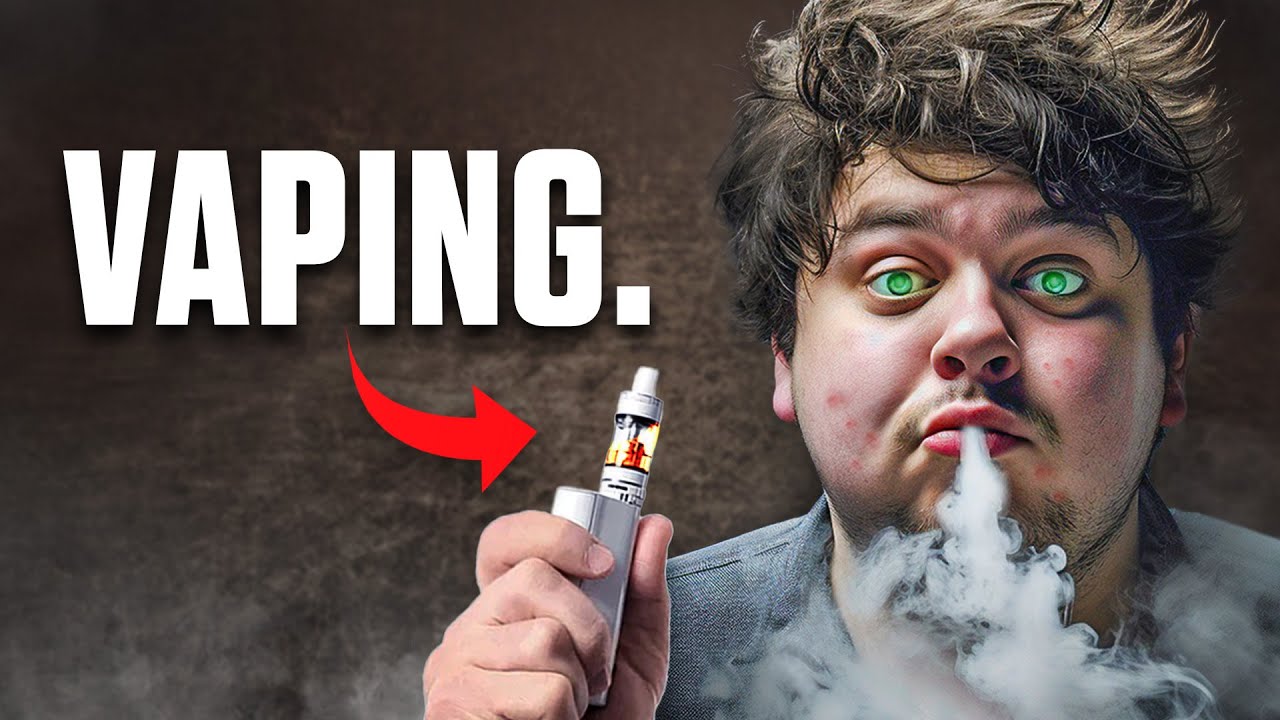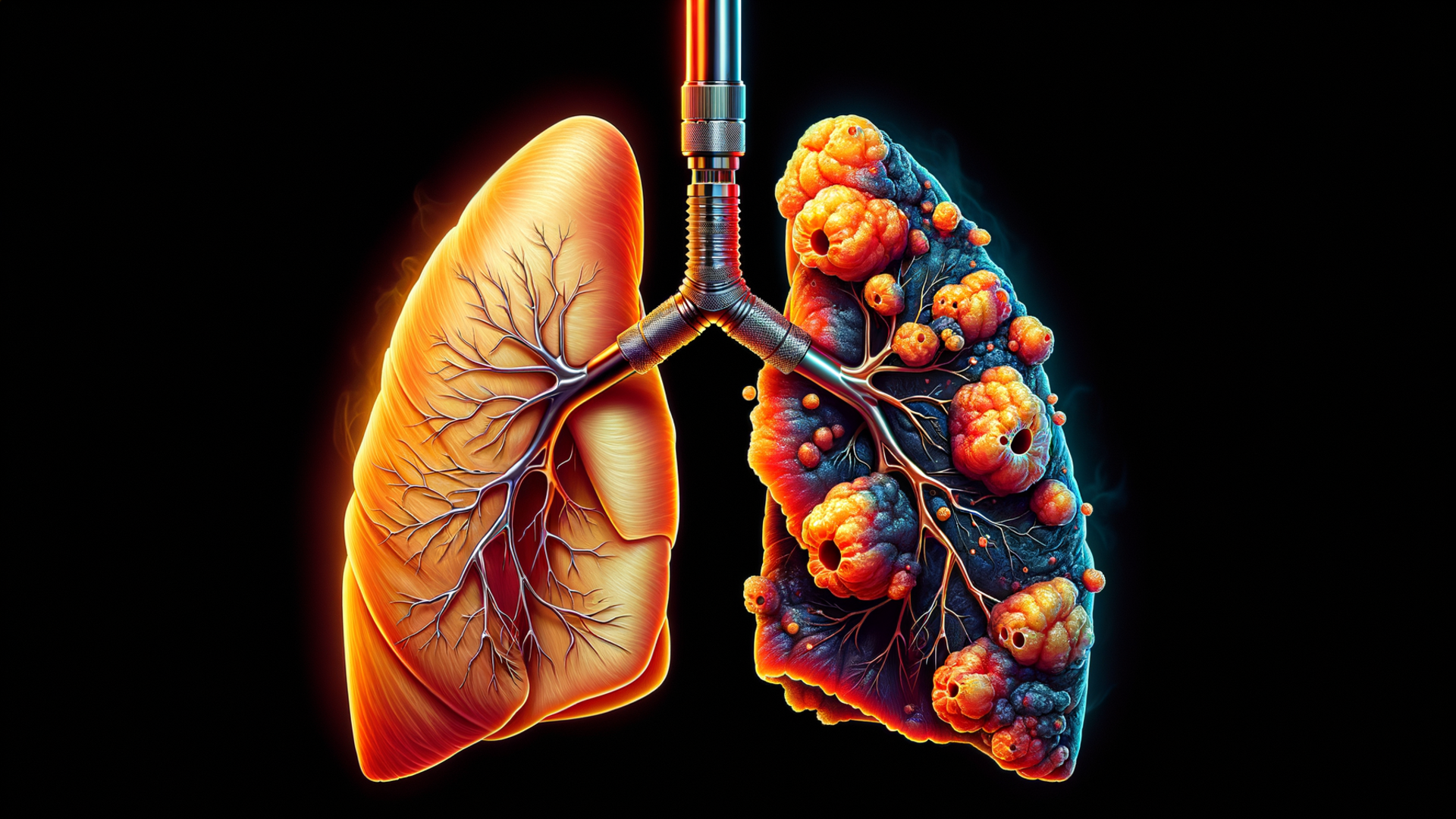

Did you know there is a growing epidemic of low testosterone levels in young males that’s raising eyebrows across the medical community? What’s even more surprising is the mounting evidence from numerous studies that establish a connection between this significant health issue and the rising popularity of vaping and e-cigarettes. Researchers are not only linking low testosterone but also a range of cardiovascular diseases and respiratory problems to the frequent use of these devices. It’s becoming increasingly clear that the widespread adoption of vaping, often marketed as a safer alternative to traditional smoking, is not as harmless as once thought.

At first glance, vaping might seem like a smart alternative to traditional smoking. In this light, Adam Bowen and James Monsees, two long-time smokers and product design students at Stanford University, introduced e-cigarettes to the world. Promoted as a “healthy alternative” to traditional cigarettes, e-cigarettes initially appeared to be a promising solution to curb tobacco’s harmful effects.

However, beneath the cool, sleek appearance of e-cigarettes, there are hidden dangers that many are unaware of. Modern-day cigarettes, when compared to their earlier versions, are found to contain an even higher concentration of toxic chemicals, posing significant health risks. Similarly, the dangers of vaping are no less severe. Instead of inhaling clouds of toxic smoke as one would with traditional cigarettes, vapers are breathing in a mist of oil vapor, which might seem relatively harmless at first glance.

This vapor, however, is not as benign as it appears. It contains various harmful substances that can adversely affect one’s health. The reality of vaping is far grimmer than it seems, with long-term health consequences that are only beginning to be understood by the medical community. The sleek design and flavored vapors of e-cigarettes mask a dangerous concoction of chemicals, drawing users into a false sense of security about their safety.

The Hidden Dangers of Vaping: What You Need to Know
E-cigarettes operate by vaporizing a mixture of substances — including propylene glycol (a chemical also used in antifreeze), synthetic flavors, and alarmingly high levels of nicotine. When these ingredients are heated, they produce a vapor with a fruity aroma, making it appealing to many users. However, this vapor is far from harmless; it’s loaded with toxins. With every inhalation, users expose themselves to these toxic substances, which can have dire health consequences. Prolonged exposure to this toxic mist can lead to severe respiratory issues, trigger asthma attacks, and even cause irreversible damage to the lungs. Perhaps most disturbing is the impact vaping can have on hormonal health. Research indicates that the practice can lead to a significant reduction in testosterone levels, posing a threat not just to adult men but also to teenagers and children who vape, potentially compromising their health and fertility in the long term. This emerging evidence paints a grim picture of the potential health epidemic that could ensue if the trend of vaping continues unchecked.

The Impact of Vaping on Male Fertility and Testosterone Levels
The potential link between vaping and testosterone levels in young males raises important questions about the broader implications for reproductive health. Testosterone, a key hormone, plays a pivotal role in male fertility, influencing not just libido but also sperm production and overall reproductive function. Disruptions in testosterone levels caused by vaping could, therefore, have significant implications for a man’s ability to father children.

Furthermore, vaping might introduce harmful substances into the body that could affect reproductive health beyond just altering hormone levels. Studies investigating the effects of vaping on male fertility parameters, such as sperm quality, sperm motility, and levels of reproductive hormones, are crucial. Such research could shed light on how e-cigarettes affect not only testosterone but also other aspects of male reproductive health. Understanding these impacts is essential for young males who vape, as it could influence their fertility and overall reproductive outcomes in the future.

The Urgent Need for Regulatory Reform: Protecting Consumers from Hazardous Products
But why is this happening? Why are companies permitted to market these hazardous products to unsuspecting consumers? The root of the problem lies in the inherently slow bureaucratic process and the potential conflicts of interest that plague regulatory organizations, such as the Food and Drug Administration (FDA). The regulatory framework is often too sluggish and encumbered by red tape to keep pace with the rapid introduction and innovation of new products in the market. As a result, when a dangerous product is identified and finally pulled from the shelves, it has frequently already caused substantial harm to consumers. This lag in response exposes a critical flaw in our regulatory system, highlighting the urgent need for reform to protect public health and safety more effectively.

But what steps can you take if you find yourself dependent on nicotine and in search of a safer alternative? First and foremost, it’s crucial to acknowledge that nicotine is highly addictive, and embarking on the journey to quit can be challenging. However, it’s important to remember that while difficult, overcoming nicotine addiction is certainly not impossible. One effective strategy is to replace the dopamine surge that nicotine provides with healthier alternatives. Substances such as caffeine, found in coffee and certain teas, or the amino acid L-tyrosine, known to support brain function, can be beneficial substitutes. These alternatives can help mimic the effects of nicotine on the brain to some extent, making the transition away from nicotine a bit more manageable.
Here’s What You Can Do

- Acknowledge the Addiction: The first step towards overcoming any addiction is acknowledging it. Recognize that vaping is not a harmless habit but a health risk that needs to be addressed.
- Seek Support: Talk to family, friends, or professionals who can provide encouragement and guidance during your quitting process. Joining support groups, whether online or in person, can also offer valuable advice and encouragement from those who have gone through similar experiences.
- Gradual Reduction: Instead of quitting cold turkey, gradually reduce your vaping frequency. This can make the withdrawal symptoms more manageable.
- Identify Triggers: Pay attention to the situations or emotions that make you want to vape and try to avoid them or find healthier ways to cope.
- Replace the Habit: Find healthier activities that can distract you from the urge to vape, such as exercising, reading, or pursuing a hobby. Physical activity can be especially helpful in managing cravings and improving mood.
- Use Nicotine Alternatives Wisely: Consider using nicotine replacement therapies (NRTs) like patches, gum, or lozenges under the guidance of a healthcare professional. Be cautious about substituting one addiction for another.
- Set a Quit Date: Choose a specific date to stop vaping entirely and stick to it. Having a clear goal can help you remain focused and motivated.
- Educate Yourself: Learn about the health risks associated with vaping and the benefits of quitting. This knowledge can reinforce your decision to quit.
- Reward Your Progress: Set milestones and treat yourself for reaching them. Weekly or monthly rewards for not vaping can serve as a motivating factor.
- Seek Professional Help: If you find it difficult to quit on your own, don’t hesitate to consult a healthcare professional. They can provide personalized advice and treatment options, including behavioral therapies.

Final Words
The world of vaping and e-cigarettes, with its sleek designs and myriad flavors, may seem harmless and even attractive at first glance. However, it’s crucial to delve deeper and educate yourself about the potential risks and what exactly you’re inhaling with every puff. Understanding the chemicals and substances you expose your body to can significantly affect your health choices. Remember, there are always safer and healthier alternatives to consider, such as nicotine-free options or quitting altogether. Making an informed decision is key to prioritizing your well-being.

On a side note: I generated all of the illustrations showcased throughout this article; let me know what you think! :)


Did you know there is a growing epidemic of low testosterone levels in young males that’s raising eyebrows across the medical community? What’s even more surprising is the mounting evidence from numerous studies that establish a connection between this significant health issue and the rising popularity of vaping and e-cigarettes. Researchers are not only linking low testosterone but also a range of cardiovascular diseases and respiratory problems to the frequent use of these devices. It’s becoming increasingly clear that the widespread adoption of vaping, often marketed as a safer alternative to traditional smoking, is not as harmless as once thought.

At first glance, vaping might seem like a smart alternative to traditional smoking. In this light, Adam Bowen and James Monsees, two long-time smokers and product design students at Stanford University, introduced e-cigarettes to the world. Promoted as a “healthy alternative” to traditional cigarettes, e-cigarettes initially appeared to be a promising solution to curb tobacco’s harmful effects.

However, beneath the cool, sleek appearance of e-cigarettes, there are hidden dangers that many are unaware of. Modern-day cigarettes, when compared to their earlier versions, are found to contain an even higher concentration of toxic chemicals, posing significant health risks. Similarly, the dangers of vaping are no less severe. Instead of inhaling clouds of toxic smoke as one would with traditional cigarettes, vapers are breathing in a mist of oil vapor, which might seem relatively harmless at first glance.

This vapor, however, is not as benign as it appears. It contains various harmful substances that can adversely affect one’s health. The reality of vaping is far grimmer than it seems, with long-term health consequences that are only beginning to be understood by the medical community. The sleek design and flavored vapors of e-cigarettes mask a dangerous concoction of chemicals, drawing users into a false sense of security about their safety.

The Hidden Dangers of Vaping: What You Need to Know
E-cigarettes operate by vaporizing a mixture of substances — including propylene glycol (a chemical also used in antifreeze), synthetic flavors, and alarmingly high levels of nicotine. When these ingredients are heated, they produce a vapor with a fruity aroma, making it appealing to many users. However, this vapor is far from harmless; it’s loaded with toxins. With every inhalation, users expose themselves to these toxic substances, which can have dire health consequences. Prolonged exposure to this toxic mist can lead to severe respiratory issues, trigger asthma attacks, and even cause irreversible damage to the lungs. Perhaps most disturbing is the impact vaping can have on hormonal health. Research indicates that the practice can lead to a significant reduction in testosterone levels, posing a threat not just to adult men but also to teenagers and children who vape, potentially compromising their health and fertility in the long term. This emerging evidence paints a grim picture of the potential health epidemic that could ensue if the trend of vaping continues unchecked.

The Impact of Vaping on Male Fertility and Testosterone Levels
The potential link between vaping and testosterone levels in young males raises important questions about the broader implications for reproductive health. Testosterone, a key hormone, plays a pivotal role in male fertility, influencing not just libido but also sperm production and overall reproductive function. Disruptions in testosterone levels caused by vaping could, therefore, have significant implications for a man’s ability to father children.

Furthermore, vaping might introduce harmful substances into the body that could affect reproductive health beyond just altering hormone levels. Studies investigating the effects of vaping on male fertility parameters, such as sperm quality, sperm motility, and levels of reproductive hormones, are crucial. Such research could shed light on how e-cigarettes affect not only testosterone but also other aspects of male reproductive health. Understanding these impacts is essential for young males who vape, as it could influence their fertility and overall reproductive outcomes in the future.

The Urgent Need for Regulatory Reform: Protecting Consumers from Hazardous Products
But why is this happening? Why are companies permitted to market these hazardous products to unsuspecting consumers? The root of the problem lies in the inherently slow bureaucratic process and the potential conflicts of interest that plague regulatory organizations, such as the Food and Drug Administration (FDA). The regulatory framework is often too sluggish and encumbered by red tape to keep pace with the rapid introduction and innovation of new products in the market. As a result, when a dangerous product is identified and finally pulled from the shelves, it has frequently already caused substantial harm to consumers. This lag in response exposes a critical flaw in our regulatory system, highlighting the urgent need for reform to protect public health and safety more effectively.

But what steps can you take if you find yourself dependent on nicotine and in search of a safer alternative? First and foremost, it’s crucial to acknowledge that nicotine is highly addictive, and embarking on the journey to quit can be challenging. However, it’s important to remember that while difficult, overcoming nicotine addiction is certainly not impossible. One effective strategy is to replace the dopamine surge that nicotine provides with healthier alternatives. Substances such as caffeine, found in coffee and certain teas, or the amino acid L-tyrosine, known to support brain function, can be beneficial substitutes. These alternatives can help mimic the effects of nicotine on the brain to some extent, making the transition away from nicotine a bit more manageable.
Here’s What You Can Do

- Acknowledge the Addiction: The first step towards overcoming any addiction is acknowledging it. Recognize that vaping is not a harmless habit but a health risk that needs to be addressed.
- Seek Support: Talk to family, friends, or professionals who can provide encouragement and guidance during your quitting process. Joining support groups, whether online or in person, can also offer valuable advice and encouragement from those who have gone through similar experiences.
- Gradual Reduction: Instead of quitting cold turkey, gradually reduce your vaping frequency. This can make the withdrawal symptoms more manageable.
- Identify Triggers: Pay attention to the situations or emotions that make you want to vape and try to avoid them or find healthier ways to cope.
- Replace the Habit: Find healthier activities that can distract you from the urge to vape, such as exercising, reading, or pursuing a hobby. Physical activity can be especially helpful in managing cravings and improving mood.
- Use Nicotine Alternatives Wisely: Consider using nicotine replacement therapies (NRTs) like patches, gum, or lozenges under the guidance of a healthcare professional. Be cautious about substituting one addiction for another.
- Set a Quit Date: Choose a specific date to stop vaping entirely and stick to it. Having a clear goal can help you remain focused and motivated.
- Educate Yourself: Learn about the health risks associated with vaping and the benefits of quitting. This knowledge can reinforce your decision to quit.
- Reward Your Progress: Set milestones and treat yourself for reaching them. Weekly or monthly rewards for not vaping can serve as a motivating factor.
- Seek Professional Help: If you find it difficult to quit on your own, don’t hesitate to consult a healthcare professional. They can provide personalized advice and treatment options, including behavioral therapies.

Final Words
The world of vaping and e-cigarettes, with its sleek designs and myriad flavors, may seem harmless and even attractive at first glance. However, it’s crucial to delve deeper and educate yourself about the potential risks and what exactly you’re inhaling with every puff. Understanding the chemicals and substances you expose your body to can significantly affect your health choices. Remember, there are always safer and healthier alternatives to consider, such as nicotine-free options or quitting altogether. Making an informed decision is key to prioritizing your well-being.

On a side note: I generated all of the illustrations showcased throughout this article; let me know what you think! :)





